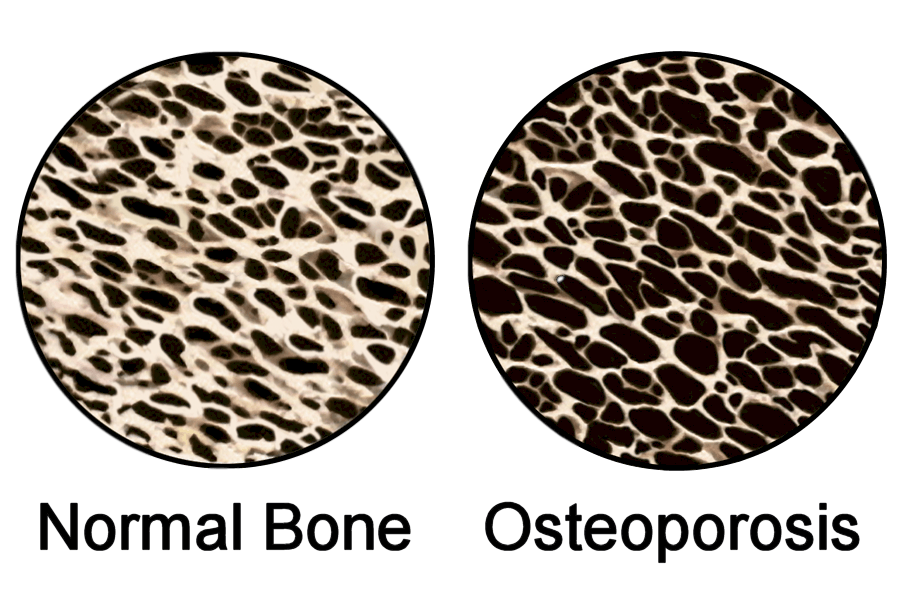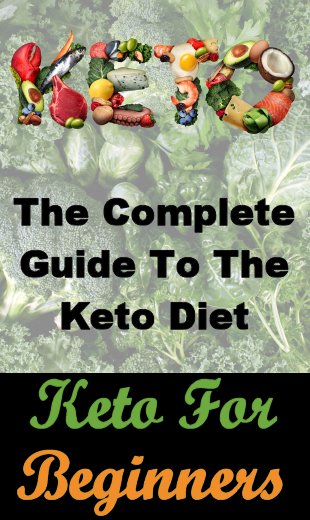Strong Bones, Osteoporosis, And Ways To Keep Your Bones Healthy
Bones – they’re probably something most people take for granted, until you break one.
So let’s take a closer look at them – what bones are, what osteoporosis is, and what you can do to strengthen your bones.
What Are Bones?
This may seem like a silly question – we all know that they are the framework on which the rest of our body is carried.
But what many people do not realize is that they are not lifeless substances.
Together with tooth enamel, bones are the hardest substances in our body, and adults have 206 of them. (Babies are actually born with 270+ bones, but many fuse together as we grow up.)
It’s clear that as we grow, from babies through childhood to adults, our bones need to grow with us, but even as adults, they go through a process of “remodelling”, where the bones are broken down and then renewed.
Having already talked elsewhere about collagen, and how it’s important for skin health – e.g. tone and elasticity – you may be surprised to learn that a significant proportion of your bones are made from this substance (which, in bones, is also known as ossein).
The other major component is a mineral, made up of calcium ions and inorganic phosphate anions.
The collagen provides a soft framework, with its flexibility helping to prevent the bones fracturing, and the calcium phosphate provides the strength and rigidity.
What Is Osteoporosis?
Most of our bone growth occurs during childhood and adolescence, and it’s also during this period that they reach their maximum density.
For girls, this typically happens around the age of 18, while boys require a couple more years.
After that, as we grow older, our bone density tends to diminish, so it’s important to do everything we can to slow down this natural loss of bone.
In fact, according to one doctor at the University of New Mexico, men and women over 35 lose one percent of their bone each year. And for women who have been through the menopause, that loss rate can increase to two or even three percent.
And the main problem caused by this overall weakening of our bones is osteoporosis (which is the fancy name for porous bones).
Here’s an image that shows how normal bone and bones with osteoporosis look:

Image (which has been modified for this site) is courtesy of Blausen Medical
This disease increases the risk of breaking a bone, and is the most common reason for broken bones in the elderly.
It is estimated that 25% of all men and 50% of all women will suffer a fracture that is related to osteoporosis at some time in their life.
The bones most often broken because of osteoporosis include those in the forearm, the hips, and the vertebrae in the spine.
However, in some cases, minor stress can lead to a broken bone, and it’s even possible for these fractures to occur spontaneously.
And unfortunately, there are usually no visible symptoms of osteoporosis – until after you break a bone. If you do see early symptoms, they can include brittle nails, receding gums, and a weaker grip.
However, if required, bone density tests are available, so speak to your doctor about this. These are usually painless and can take up to half an hour.
What Causes Osteoporosis?
Other than the natural process of aging, possible causes include:
- Alcoholism
- Anorexia nervosa
- Genetic predisposition (e.g. if there is a family history of it)
- Hyperthyroidism
- Kidney diseases
- Oophorectomy (i.e. removal of the ovaries)
- Poor nutrition
- Sedentary lifestyle
- Smoking
- Some medications (e.g. anti-seizure, chemotherapy, proton pump inhibitors, SSRI antidepressants)
What Can You Do To Strengthen Your Bones?
Let’s start with a list of nutrients that you need to support healthy bones:
- Calcium. Almost all of the calcium in your body can be found in your bones, so getting plenty of calcium is crucial. The recommended amount for adults under the age of 50 is 1,000 mg per day, and for women over 50, that increases to 1,200 mg per day In addition, the maximum amount you should have in any one day is 2,000 – 2,500 mg.
Good sources of calcium include almonds, amaranth, beans, canned salmon, dairy products (e.g. cheese, milk, yoghourt), figs, leafy greens (e.g. collard greens, kale, spinach), lentils, rhubarb, sardines, seeds (e.g. celery, chia, poppy, sesame), turnips, and whey protein.
- Magnesium. Calcium is required for bones, but unless you also have an adequate supply of magnesium, it will all be for naught. And that’s because magnesium is vital for helping your body absorb the calcium so that it can make use of it.
Unfortunately, a large percentage of people are not getting enough magnesium.
I have an entire article about the importance of this mineral, and a list of natural dietary sources, here.
- Omega-3 Fatty Acids. One of these fats’ many benefits is slowing down bone loss.
Good food sources are listed here.
- Protein. While protein is required to make collagen, it’s important not to eat too much of it. It is recommended that adult women consume 46 g of protein per day, and adult men 52 g per day. However, after the age of 50, these quantities should be increased by 4 g to help counter bone loss.
Good sources of protein include amaranth, black beans, cottage cheese, eggs, Greek yoghourt (preferably plain), lentils, oats, peanuts (as well as peanut butter, provided it’s a high-quality one), sardines, seeds (e.g. pumpkin, sunflower), and whey powder.
- Vitamin B12. A deficiency of this vitamin can reduce the number of bone-forming cells.
You can find a list of B12 sources here.
- Vitamin C. This vitamin helps build the collagen, which is the soft framework for your bones.
You can find a list of foods rich in Vitamin C here.
- Vitamin D. Like magnesium (see above), this vitamin also helps in the absorption of calcium.
And also like magnesium, many people are deficient in vitamin D.
You can find a list of foods rich in vitamin D here.
- Vitamin K. This vitamin helps increase both the density and strength of your bones.
Good sources for this vitamin include broccoli, cheese, fermented foods (e.g. natto), fruits (e.g. berries, figs, grapes), leafy greens (e.g. spinach), and nuts.
There are also a few foods and ingredients you should avoid (or, at least, minimize), including:
- Alcohol. This can interfere with the bone remodelling process mentioned above.
- Caffeine. This includes both regular coffee and many colas / sodas.
And then there some non-food-related thing you can do, including:
- Exercise. People who exercise regularly tend to have stronger, denser bones. What is recommended is 30 minutes of weight-bearing exercise (e.g. climbing stairs, dumbbells, leg presses, push-ups, resistance bands, squats) or strength training, but any of the following can work well too: aerobics, dancing, jumping (as high as you can ten times twice a day), karate, racquet sports, skating, skiing, and walking. And finally, heavy yard work such as gardening is another option.
- Stop Smoking. Smoking is a known risk factor for osteoporosis (as well as a host of other health issues), so cutting down or, preferably, stopping completely is a great way to help your body in all sorts of ways.
Conclusion
Bone health is not something that most people pay attention to, but as you can see, it’s just as important as many other aspects of your health.
And as you may have noticed, if you’ve read other articles on my site, many of the foods you should eat (and the ones you shouldn’t), and the non-food-based activities, have a lot in common.
What that means is that if you eat the right foods for, say, bone health, you’ll be doing yourself good in other areas too.
Additional Resources
These are suggestions for those who wish to delve deeper into any of the above:







